Live on the homepage now!
Reader Supported News
ALSO SEE: Russia's 'Satan 2' Missile
Changes Little for U.S., Scholars Say
Russia’s war in Ukraine has reawakened fears about the bomb—and endangered the principle of deterrence.
Vladimir Putin’s war in Ukraine has jolted the world back into an uncomfortable consciousness of the nuclear threat. In the past month, official warnings have emerged at a striking pace. “Given the potential desperation of President Putin and the Russian leadership, given the setbacks that they’ve faced so far militarily, none of us can take lightly the threat posed by a potential resort to tactical nuclear weapons or low-yield nuclear weapons,” William Burns, the C.I.A. director and a former ambassador to Russia, warned on April 14th. The U.S. assessment of when and why Moscow might use such weaponry has changed, Lieutenant General Scott D. Berrier, the director of the Defense Intelligence Agency, conceded in testimony to a House Armed Services subcommittee. A prolonged war in Ukraine will sap Russia’s manpower and matériel, while sanctions will throw the nation into an economic depression and undermine its ability to produce more precision-guided munitions and conventional arms, he said. “As this war and its consequences slowly weaken Russian conventional strength, Russia likely will increasingly rely on its nuclear deterrent to signal the West and project strength to its internal and external audiences.” Putin’s aggression is “reviving fears” of a more “militaristic Russia.”
The Kremlin’s successful test, on April 20th, of a missile capable of flying at hypersonic speeds and carrying up to ten nuclear warheads anywhere in the world—and of outsmarting defense systems—contributed to the ominous optics. “This truly unique weapon will force all who are trying to threaten our country in the heat of frenzied, aggressive rhetoric to think twice,” Putin boasted on state television. Last month, Washington cancelled its own test of an intercontinental missile to “manage escalation,” the Secretary of Defense, Lloyd Austin, testified.
Russia has not yet repositioned its nuclear forces, Burns said, despite sabre-rattling about a heightened state of readiness. Nor is its new missile ready for deployment. But Putin’s reckless war now has a “distinct nuclear dimension”—with lessons that extend far beyond Ukraine and that will endure after the war is over, the Arms Control Association in Washington, D.C., concluded this month. Putin’s invasion “underscores the reality that nuclear weapons don’t prevent major wars,” Daryl Kimball, the organization’s executive director, told me. “U.S. and NATO nuclear weapons have proven to be useless in preventing Russian aggression against Ukraine.” The war has imperilled a long-standing premise of deterrence—having a bomb to avoid being bombed. Kimball reflected, “When nuclear deterrence fails, it fails catastrophically.”
[Support The New Yorker’s award-winning journalism. Subscribe today »]
The war in Ukraine underscores an even bigger problem. The infrastructure of global security—like the bridges, railways, and power grids that make up our physical infrastructure—is decaying. The challenge ahead is to devise a new or more stable security architecture—with treaties, verification tools, oversight, and enforcement—to replace the eroding models established after the last major war in Europe ended, seventy-seven years ago.
Putin’s invasion has also exposed changes to the global balance of nuclear power. Shortly before his retirement last month, I sat down with Kenneth (Frank) McKenzie, Jr., a four-star general who once wore a key around his neck that unlocked sensitive material necessary for the President to respond to a nuclear crisis. In what feels like a throwback to the Cold War and his early days as a young marine officer, he said, the U.S. is again focussed on nuclear threats from Moscow. Only the capabilities have reversed. During the Cold War, between 1945 and 1989, Washington advanced its nuclear arsenal to counter Moscow’s growing might in conventional arms. In 1954, it tested a weapon a thousand times more powerful than Little Boy, the devastating bomb dropped on Hiroshima. America even produced nuclear land mines. After the Soviets got the bomb, the U.S. still had an eight-to-one advantage in nuclear capabilities during the Cuban missile crisis, in 1962. By the Cold War’s end, the U.S. had developed a “capability and capacity edge, really, over the rest of the world that appeared insurmountable,” McKenzie said.
After the Soviet Union’s collapse, the Pentagon “took a holiday” from studying high-end warfare, the general told me. “We looked away,” he said. The U.S. was drawn into a war in Afghanistan after the 9/11 attacks, in 2001, and then opted to invade Iraq, in 2003. McKenzie was deployed in both wars. The U.S. focussed on conventional conflicts and insurgencies, while Russia, under Putin, built up its nuclear arsenal. Today, U.S. and Russian capabilities have “completely inverted,” McKenzie said. The U.S. has superiority in conventional arms, while Moscow has more nuclear weapons—and more options to deliver them.
The type of nuclear weapons most at issue has also changed. There’s more than one. The U.S. dropped two strategic nuclear bombs on Japan. Strategic weapons are long-range—they travel some three thousand miles—and produce high-yield explosions. They can destroy vast swaths of land and any human within range. Russia currently has just over six thousand strategic warheads; the U.S. has fifty-five hundred. Beginning in the nineteen-seventies, the two countries negotiated several treaties to limit strategic weapons, though all but one have since been scrapped. The New START treaty is the only surviving bilateral pact; it was extended for five years shortly after Biden’s Inauguration, but it seems more tenuous now.
The other type of nuclear weapons are tactical, or nonstrategic, which the U.S. is more worried about today. They are shorter-range—they travel up to three hundred miles—and often have lower-yield warheads. (Some, though, carry more kilotons than the Hiroshima bomb.) They are designed to take out tank or troop formations on a battlefield—not wipe out a city. In the history of nuclear weapons, there has never been a treaty—bilateral or international—that limits developing or deploying tactical nukes anywhere. During the Cold War, the U.S. and the Soviet Union produced thousands each, with Moscow controlling up to twenty-five thousand. Afterward, the U.S. dismantled most of its tactical arsenal and withdrew most of those weapons from Europe. Russia kept more of its stockpile. There is now a vast disparity in tactical arsenals. Last month, the Congressional Research Service reported that Russia has up to two thousand tactical nukes, while the U.S. has around two hundred.
Today, Russia also has many more delivery systems for tactical nuclear weapons—submarine torpedoes, ballistic missiles on land or sea, artillery shells, and aircraft—while the U.S. has only gravity bombs that can be dropped from warplanes. “They have more diverse capabilities than we do,” McKenzie concluded. More than a hundred U.S. tactical nukes are again situated in Europe, at bases in five NATO countries: Belgium, Germany, the Netherlands, Italy, and Turkey. Most of Russia’s are on its western front, near the borders of NATO members.
Four scenarios may lead Russia to use a nuclear weapon, according to Kimball of the Arms Control Association. To coerce Kyiv or its NATO allies to back down, Putin could carry out a “demonstration” bombing in the atmosphere above the Arctic Ocean or the Baltic Sea—not for killing, but “to remind everyone that Russia has nuclear weapons.” Russia could also use tactical weapons to change the military balance on the ground with Ukraine. If the war expands, and NATO gets drawn into the fight, Russia could further escalate the conflict with the use of short-range nuclear weapons. “Both U.S. and Russian policy leave open the possibility of using nuclear weapons in response to an extreme non-nuclear threat,” Kimball said. Finally, if Putin believes that the Russian state (or leadership) is at risk, he might use a tactical nuclear weapon to “save Russia from a major military defeat.” Russia has lost some twenty-five per cent of its combat power in the last two months, a Pentagon official estimated this week. Moscow’s military doctrine reserves the right to use nuclear weapons “in response to the use of nuclear and other weapons of mass destruction” against Russia or its allies, and also in response to aggression via conventional weapons “when the very existence of the state is threatened.” In military jargon, the country’s policy is “to escalate to de-escalate,” Richard Burt, the lead negotiator on the original START accord, which was signed by Gorbachev and George H. W. Bush in 1991, told me. “The idea is to so shock the adversary that a nuclear weapon has been used, to demonstrate your resolve that you’re willing to use a nuclear weapon, that you paralyze your adversary.”
The new nuclear reality poses another challenge: how to limit nuclear weapons beyond Russia and the United States. Nine nations now have nuclear capabilities. Putin’s war undermines the Treaty on the Nonproliferation of Nuclear Weapons, the cornerstone of international arms control since 1968. It is the only binding commitment—now signed by almost two hundred states—that seeks to disarm those nations which have the bomb and to prevent others from getting it. The treaty is based on the U.N. Charter, which stipulates that all nations must refrain “from the threat or use of force against the territorial integrity or political independence of any state.”
Since the nineteen-sixties, experts have debated whether Washington and Moscow would use a limited number of tactical nuclear weapons on a conventional battlefield—for example, to destroy a military position or gain a chunk of territory. “The answer is no,” Kimball said. “There is nothing like a limited nuclear war.” At the end of his military career, McKenzie, who spent more than four decades preparing for wars of all kinds, reflected on the nuclear stakes. “We should be rattled right now,” he said. “I am rattled. I’m concerned about where we are.” Three decades after Gorbachev’s speech, the respite now seems illusory.
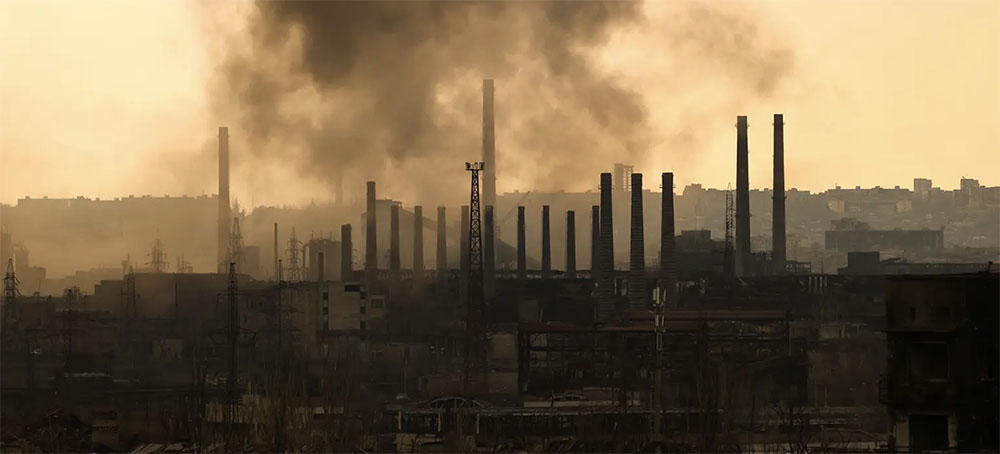 Russia has been bombarding the Azovstal steel plant with airstrikes and attempted to storm it. (photo: ZUMAPRESS.com)
Russia has been bombarding the Azovstal steel plant with airstrikes and attempted to storm it. (photo: ZUMAPRESS.com)
ALSO SEE: Mariupol Mayor Calls for Full Evacuation
as Satellite Images Show Thousands in Mass Graves
Food and water running out in Azovstal stronghold as Ukraine says mass graves seen on satellite near city could hold 9,000 civilian dead
The film was recorded on Thursday. The women say 15 children are living in tunnels beneath the plant, ranging in age from babies to teenagers. They are trapped together with their families and other civilians, including factory workers.
The video shows several children, one apparently doing homework in a colouring book, surrounded by clothes and makeshift beds. A boy says he is desperate to see sunlight again and to breathe fresh air outside after weeks living in a dungeon.
An unnamed woman says she has spent 50 days underground, since 25 February, the second day of Vladimir Putin’s invasion of Ukraine. Others say they took refuge in the plant in early March, as Russian forces pounded their apartments with artillery and airstrikes.
Food and water are almost finished, the woman said, with people “on the edge of hunger”. “All the provisions we brought with us are running out. Soon we won’t even have enough food for the children.”
She added: “We are here and need help. We are at the epicentre of events and we can’t get out. My child needs to be evacuated to a peaceful area and others too. We beg for guarantees of safety for our kids.”
The woman continued: “We worry for the lives of our children and [elderly] parents who require medical care. They are running out of strength and life power. There isn’t a single day without shelling. They are scared even to go to the toilet.”
The Ukrainian government has been trying to establish a humanitarian corridor which would allow civilians inside the plant to safely exit. The sprawling factory is a base for Ukraine’s Azov battalion, a part of the national guard, which shot the video.
Under cover of darkness, Ukrainian forces managed to deliver weapons to the encircled soldiers via helicopter, Oleksiy Danilov, secretary of the national security and defence council said, adding: “We have a difficult situation, but our army is defending our state.”
About 80 civilians escaped from Mariupol on Wednesday in four buses. Ukraine says subsequent attempts have failed because Russian troops keep shelling the meeting place. They add that Moscow has forcibly removed 40,000 residents to Russian territory.
On Thursday, Putin declared victory in Mariupol. He said his forces, which control the rest of the city and have hoisted a flag on the TV tower, would not seek to enter the plant. They would instead seal it off so “not even a fly could escape”, he told his defence minister Sergei Shoigu.
In reality, Moscow has resumed airstrikes and is trying to storm the steelworks, Ukraine’s presidential adviser Oleksiy Arestovych said on Saturday. He told national TV: “The enemy is trying to strangle the final resistance of the defenders of Mariupol in the Azovstal area.”
Russian units continue to hide evidence of their crimes by removing bodies from the city’s rubble, Ukrainian officials said. Satellite images show two new mass graves next to an existing cemetery in the village of Manhush, 15km west of Mariupol. Between 3,000 and 9,000 civilians are buried there, they suggest.
Victims include civilians killed on 16 March when a Russian war plane flattened the city’s drama theatre. Ukraine’s president, Volodymyr Zelenskiy, has said 300 people died in the strike. The theatre was being used as a shelter by about 1,500 women and children.
Since failing to capture Kyiv, the Kremlin has amended its war plan. The current goal is to “liberate” the eastern Donbas region. On Friday, a Russian general said a second objective was to create a land corridor linking the separatist so-called Donetsk and Luhansk people’s republics with Crimea and the breakaway republic of Transnistria in Moldova.
In its latest intelligence update, the UK Ministry of Defence said Russian tactical battalion groups, which have massed in and around Donbas, had made “no major gains in the last 24 hours”. “Ukrainian counterattacks continue to hinder the efforts,” it said.
Further north, the Ukrainian army clawed back some territory. It liberated three villages around the city of Kharkiv, according to regional governor Oleh Synehubov. Troops had secured positions in Bezruky, Slatine and Prudianka villages, he said.
Ukraine’s general staff said it had repelled eight Russian attacks, destroying nine tanks, 18 armoured units and 13 vehicles, a tanker and three artillery systems. “Units of Russian occupiers are regrouping. The enemy continues to launch missile and bomb strikes on military and civilian infrastructure,” it said.
The Luhansk governor, Serhiy Haidai, said on Saturday two people were killed by Russian shelling in the city of Popasna. He said an evacuation train for residents of the Donetsk and Luhansk areas was expected from the eastern city of Pokrovsk bound for the western city of Chop, near Ukraine’s border with Slovakia and Hungary.
“In addition to the fact that street fighting continues in the city for several weeks, the Russian army constantly fires at multi-storey residential buildings and private houses,” Haidai wrote on Instagram.
“Just yesterday, local residents withstood five enemy artillery attacks. Not all survived.”
Ukrainian authorities said that a series of Russian TU-95 missiles fired from the Caspian Sea on Saturday killed at least five people in Odesa, including a three-month-old baby, and wounded 18 others.
The air force’s southern command added that two missiles had also hit residential buildings in the city.
“Five Ukrainians killed and 18 wounded, and those are only the ones that we were able to find,” said the head of Ukraine’s presidential office, Andriy Yermak. ‘‘It is likely that the death toll will be heavy.”
In a press conference on Saturday evening, Zelenskiy confirmed that a three-month-old baby was among those killed. “They killed a three-month-old baby,” he said. “The war started when this baby was one month old. Can you even imagine what is happening? They are just bastards. Just bastards. I don’t have any other words to use in this context. They are just bastards.”
On another front, near Kherson, a city in the south of Ukraine under Russian military occupation, two Russian generals have been killed while another is in a critical condition, the Ukrainian ministry of defence’s intelligence directorate has said. The Russian generals were allegedly killed after the Ukrainian military hit the command post of Russia’s 49th army near Kherson on Friday, according to the statement.
Ukrainian authorities on Saturday urged those celebrating Orthodox Easter, one of the biggest celebrations in Ukraine, to follow religious services online and to respect curfews amid fighting with Russian troops, despite a holiday that usually attracts crowds.
Both Russia and Ukraine celebrate Orthodox Easter on Sunday, but hopes for a ceasefire faded on Saturday, with Ukrainian officials reporting the deadly strike on Odesa and fighting in the east.
“No crowds!’’, said the governor of the Poltava region south-west of Kyiv, Dmytro Lunin, “There should not be situations where believers gather outside churches,” he said.
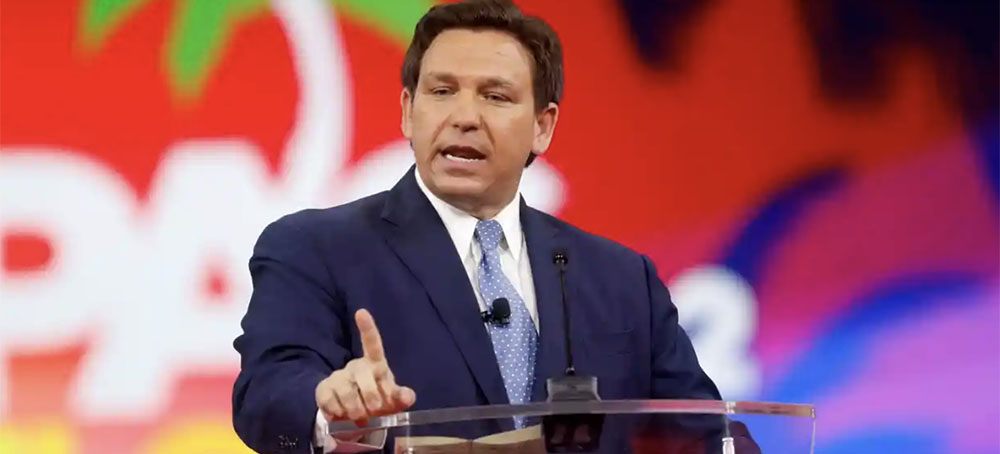 Governor Ron DeSantis, in an unusual move, was given authority to redraw electoral maps by the Republican-controlled legislature. (photo: Octavio Jones/Reuters)
Governor Ron DeSantis, in an unusual move, was given authority to redraw electoral maps by the Republican-controlled legislature. (photo: Octavio Jones/Reuters)
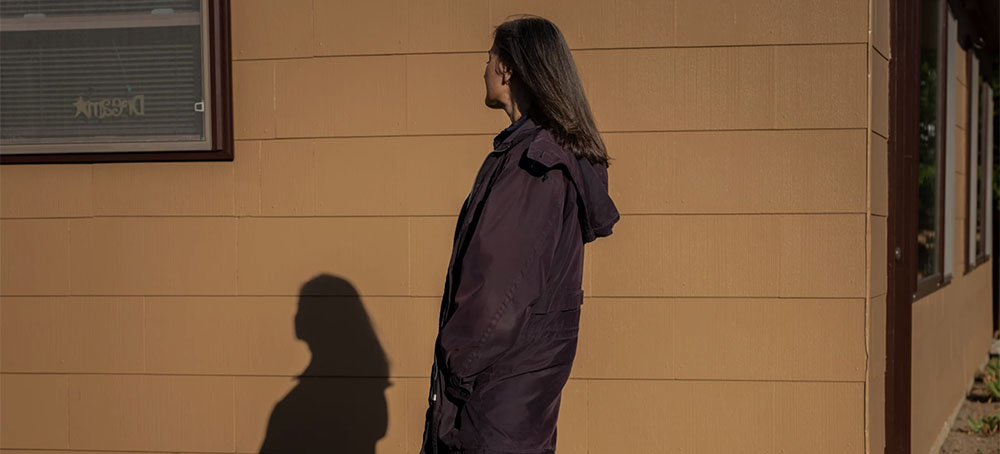 Laurie's mother, Stephanie, 75, died of COVID-19 in December. 'I don't believe she was supposed to die,' Laurie says. "I blame the misinformation.' Stephanie had been wrapped up in a world of conspiracy theories online, which led her to refuse treatments for COVID. (photo: Meredith Rizzo/NPR)
Laurie's mother, Stephanie, 75, died of COVID-19 in December. 'I don't believe she was supposed to die,' Laurie says. "I blame the misinformation.' Stephanie had been wrapped up in a world of conspiracy theories online, which led her to refuse treatments for COVID. (photo: Meredith Rizzo/NPR)
"There is no perfect puzzle piece," says Stephanie's daughter Laurie. "I literally go through this all the time."
Stephanie was 75 when she succumbed to COVID-19 this past December. But Laurie says it wasn't just COVID that killed her mother. In the years leading up to her death, Stephanie had become embroiled in conspiracy theories. Her belief in those far-out ideas caused her to avoid vaccination and led her to delay and even refuse some of the most effective treatments after she got sick.
"I don't believe she was supposed to die," Laurie says. "I blame the misinformation."
As America approaches a million deaths from COVID-19, many thousands of families have been left wondering whether available treatments and vaccines could have saved their loved ones. According to the Kaiser Family Foundation, more than 230,000 deaths could have been avoided if individuals had gotten vaccinated.
Not everyone who refuses a vaccine believes in elaborate conspiracy theories, but many likely do. Anti-vaccine advocates have leveraged the pandemic to sow mistrust and fear about the vaccines. Local papers across the country are dotted with stories of those who refused vaccination, only to find themselves fighting for their very lives against the disease.
Stephanie's family wanted to share what happened to her in the hope their story can help others. NPR agreed to use only family members' first names to allow them their privacy as they continue to grieve.
"I know we're not alone," says Laurie. "I know this is happening all over the place."
From vaccine supporter to skeptic
Stephanie was a native of the Bronx, and for almost 55 years she was married to a man named Arnold. They met shortly after he returned from the war in Vietnam. Her family's dry cleaning shop was just a few blocks from his parents' house.
Parking in the Bronx was always tricky, Arnold quips. "So I said, 'You know, this isn't bad — she's very attractive, she's pleasant to be with — maybe I'll start dating her and I won't lose my parking spot."
They got engaged after just one month. After a few years of marriage, they moved to Long Island and bought a fixer-upper home. They had two daughters, Laurie and Vikki, who Stephanie stayed home to raise. Vikki remembers Stephanie had an unwavering belief in her children's ability to achieve whatever they wanted.
"She just believed we could do anything, and I think that's really powerful as a parent," she recalls.
When the daughters reached high school, Stephanie began to get into astrology and tarot. She did readings to advise people about things like houses, kids and jobs. It was quirky, but Laurie says that Stephanie brought a lot of positivity and optimism to her sessions.
"Everybody loved it, because everybody is always trying to figure out their lives. There's always the struggles," she says. "She spread hope with people."
For all her star charts and spiritual ideas, Stephanie was practical when it came to her health. She went for regular checkups, and she was a big believer in vaccines. "She made sure I took the flu shots, we took the shingles shot, we took the pneumonia shot," Arnold recalls. "I mean, I was like a pincushion."
The family lived for many happy years this way. The daughters grew and started families of their own. Arnold retired from a job working for the gas company.
Then, just before the pandemic began, there was a change in Stephanie. Nobody can exactly pinpoint when it happened. Part of it was physical. Throughout her life, she had played tennis. But it had taken a toll on her knees. She was finding it hard to walk and had to have a stair lift installed in her house.
The loss of tennis from her life also had a psychological impact, says Vikki. "It was her everything. It's where she felt really valued and strong and important."
Perhaps partially because she was isolated and feeling down, Stephanie got into watching strange videos and sending them to the rest of the family. Vikki says it was Laurie who was really the first to notice.
"She called me up one day and was like, 'All right, have you been watching these videos that Mom is sending us?'"
The videos covered a wide range of far-fetched conspiracy theories: JFK Jr. is still alive; reptilian aliens control the government. Arnold says he wouldn't even look at them: "Watching them, to my way of thinking, would have reinforced that they were valid. Even if I'd argued against them, she wouldn't have accepted my argument."
Stephanie's fringe ideas were troubling, but the family still hung out. Laurie says sometimes they fought over her beliefs, but often they kept the conversation on things like the grandkids.
Then came the pandemic, and everything changed. Stephanie's videos told her COVID was a hoax. But Laurie and Vikki took it seriously. They were worried about giving their parents the virus. So they stayed away, trying to keep them safe.
"We just stopped seeing each other as a family," Laurie says. "We didn't do Thanksgiving that first year."
While the family stayed away, others did not. Through her astrology, Stephanie had formed a spiritual group that met weekly at her house. And like Stephanie, other members of that group didn't believe the virus was real.
The more time they spent together, the more Stephanie became invested in her beliefs. Arnold says it was "tribal": "Staying in the same clique, reinforcing each other, and not getting outside opinions."
When the COVID vaccines came along, Stephanie absolutely refused to get one because she falsely thought the shots contained tiny microchips. Moreover, she began avoiding her daughters, who had gotten vaccinated, because she believed false information that vaccinated people could somehow spread COVID.
Arnold didn't get vaccinated, to try and keep the peace.
Good vs. evil
The family felt stuck. They didn't know how to shake Stephanie out of her beliefs. And they are hardly alone. Diane Benscoter runs a nonprofit called Antidote, which seeks to help families whose loved ones have been taken over by cults and conspiratorial thinking. She says she's inundated with emails from families facing the same struggles.
"My inbox," she says. "It's horrible."
Much of the public conversation around misinformation focuses on fact-checking and flagging false posts online. But these methods don't provide much help for people like Stephanie, says Sander van der Linden, a professor of social psychology at the University of Cambridge in the U.K.
"Most people who are really into disinformation and conspiracy theories don't believe in a single conspiracy theory," he says. Rather, they're drawn into a self-reinforcing conspiratorial worldview in which conspiracies build on one another. While the theories can seem disparate, they often have unifying themes: They feed distrust in sources of authority; they claim insider knowledge that makes the believer feel valuable; and frequently, that knowledge includes a secret plan to defeat the forces of evil.
Van der Linden says there are three major reasons why people are drawn into this world in the first place: fear and anxiety about the future, a desire to have a simple explanation for complex or seemingly random events, and the social support that communities around conspiracy theories can provide.
While it's impossible to say exactly what drove Stephanie, her daughters identify several things that seem to roughly correspond to those broad categories of motivations. First, they say Stephanie suffered from a lot of anxiety throughout her life. With her tennis days behind her, much of her self-esteem now lay with her astrology work and her spiritual group. And that group was clearly playing the role of echo chamber, reinforcing her ideas and beliefs.
Benscoter thinks the pandemic has also pushed many people further into the shadows of conspiracies. "The pandemic increases fear, and fear is a really hard emotion. And isolation is a really hard place to be," she says.
Benscoter herself is a former cult member. She says the conspiracy narratives provide reassurance. Even if the facts seem crazy, they can provide emotional stability. Speaking of her own past, she says these tales gave clarity because they turned complex problems into simple questions of good versus evil.
"It feels so good; I never felt so secure. I mean I knew what was right and wrong. There was no question," she says.
Because those motivations are all about psychological needs, arguing the facts around individual conspiracies will do little to shake people out of their beliefs. Moreover, "when you try to pull on one, the whole thing collapses for people," van der Linden says. "So the resistance becomes much stronger."
Efforts to dissuade Stephanie from her beliefs were frequently met with outbursts of rage, her family says. "She was angry that we weren't listening to her and believing what she believed," Vikki says. "A couple of times I tried to speak to her on an analytical basis," Arnold says. "But I could see she was getting defensive, and I didn't want to alienate myself from her."
Both Benscoter and van der Linden say there is no surefire way to get someone from abandoning conspiratorial thinking. They also say one of the best strategies is to try and get a person to question the messenger, not the message. "People, especially these kinds of people, don't want to feel like they're being manipulated," van der Linden says. He says it's good to ask questions like: "Do you think it's possible that other people are profiting off you?"
It was a strategy Stephanie's family said they tried a few times. But even then, van der Linden says, these interventions take time. People can't change their thinking instantly, and often will backslide as they talk again to their fellow conspiracy theorists.
"It's an extensive process," he says.
Out of time
Unfortunately for Stephanie, she did not have time. In November of 2021, just before Thanksgiving, Arnold and Stephanie met two other couples for dinner at a popular local restaurant.
"Afterwards, she started developing symptoms," Arnold says.
But she refused to get tested. Instead, she ordered drugs online from a natural healer in Florida. Two of the drugs, ivermectin and hydroxychloroquine, are ineffective against COVID, but many conspiracy theorists believe they work. Stephanie waited for the pills to come.
"She was waiting for the pills and I said, 'Why wait? You could go to the doctor right now. You have amazing health insurance. You don't have to wait,'" Laurie says.
All the while, she was getting sicker and sicker. The daughters got her a device to check her blood-oxygen level: It was at just 77%.
Vikki called a friend who was a nurse: "She said, '77?! You need to get your mom to the hospital. She could die!' And I said, 'Really?'"
Stephanie still didn't want to go, but after hearing she could die, she eventually gave in. Arnold drove her to the hospital.
Even after she was admitted, she turned down some effective treatments for COVID. One drug, called remdesivir, has been proven to reduce the severity of COVID, but Stephanie believed conspiracy theories claiming the drug was actually being used to kill COVID patients. Stephanie also refused another treatment shown to be very effective for patients with COVID-19: monoclonal antibodies. Laurie remembers how one doctor responded when he learned that Stephanie had refused the drugs:
"He was like, 'Why didn't you take any of the treatments Stephanie?' She found every little piece of energy in her and yelled back at him, 'BECAUSE IT'LL KILL ME!'"
Meanwhile, Arnold had developed symptoms and was getting sicker and weaker. He eventually asked his daughters for help.
Vikki drove him to get monoclonal antibodies. He worsened overnight, and the next day, he was admitted to the same hospital that Stephanie was staying in. Unlike his wife, Arnold accepted every treatment he was offered.
"He said yes to everything. He said yes to every treatment they were willing to give him," says Vikki. "My Mom said no."
He was discharged after just five days.
"I felt hopeful, because I told her I was going home. I told her, 'I'll be waiting for you.' And then, everything started deteriorating," Arnold recalls.
"She was fighting a fight without any defenses," says Perihan El Shanawany, a doctor with Northwell Health, who was part of the team that cared for Stephanie. As Stephanie grew sicker, she started developing blood clots on her lungs. El Shanawany knew that as things progressed, Stephanie would only suffer more.
"Patients at that point feel like they're suffocating, they're drowning," El Shanawany says. "It's a horrible way to die."
The only option Stephanie had left was to go on a ventilator. So Dr. El Shanawany sat down with her and asked her what she wanted.
"She did say that she's had enough. That's her words, 'I've had enough. This is not a life. I can't live like this anymore'," El Shanawany says.
During a video call, Laurie heard her mother's wishes. She had been urging Stephanie to fight because she felt it wasn't her time. But hearing those words, "I can't live like this anymore," something changed. For years they had been battling over the lies and conspiracies. Laurie knew it was time to make peace with the mother she loved.
And that meant helping Stephanie to die comfortably. "My whole mission after hearing that was to help her get her wishes," she says.
Laurie stayed by her mother's side, reading text messages from friends and relatives who wanted to say goodbye. At one point, seeing she was suffering, Laurie played her some music written by a family member: "She gave me a thumbs up," Laurie recalls. "She was there."
"We all said goodbye and told her she was the best," Laurie says.
Stephanie died the next day. It was Dec. 28, a few days after Christmas.
At the funeral, Arnold heard from scores of people whom Stephanie had helped over the years, through her astrology, and just her advice and friendship.
"They all said, 'She changed my life,' " he says tearfully.
In the months since Stephanie died, the family has begun the long road to healing. Arnold has received the COVID vaccine. And Laurie recently bought a home closer to her father and sister. "We'll be able to be in each other's lives more," she says.
She also says she's slowly making her peace with Stephanie's death.
"I'm a lot less angry," she says.
But she still thinks about the people who make the paranoia-laced videos that her mother consumed day after day. She understands that something inside her mother drew her to those voices, but Laurie still sees Stephanie mainly as a victim of the grifters and attention-seekers who generate many hours of falsehoods every day to grab money, likes and shares.
"Whoever is creating all this content, is on some level waging a war — here in America — inside of every family," she says. "I think people need to wake up to that."
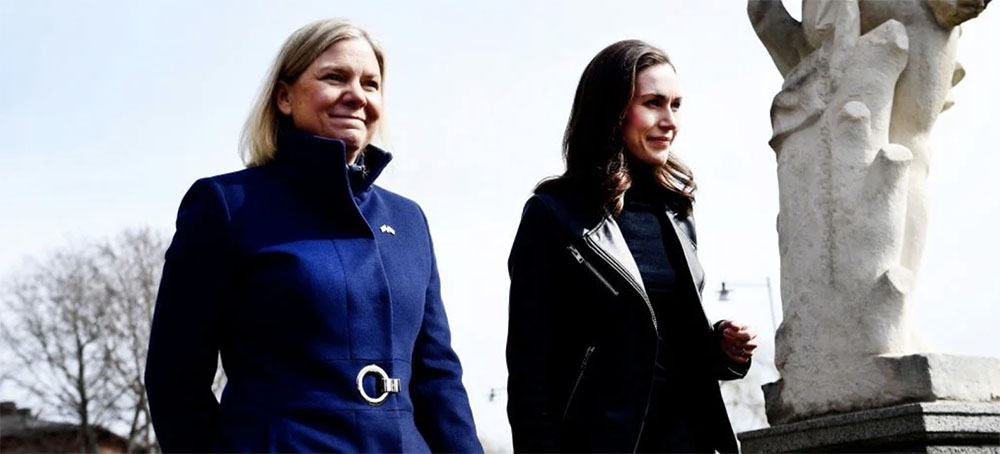 Swedish prime minister Magdalena Andersson (L) welcomes Finnish prime minister Sanna Marin prior to a meeting on whether to seek NATO membership in Stockholm, Sweden, on April 13, 2022. - Rattled by Russia's invasion of Ukraine, Finland will kickstart a debate that could lead to seeking NATO membership, a move that would infuriate Moscow. (photo: Paul Wennerholm/TT News Agency/AFP)
Swedish prime minister Magdalena Andersson (L) welcomes Finnish prime minister Sanna Marin prior to a meeting on whether to seek NATO membership in Stockholm, Sweden, on April 13, 2022. - Rattled by Russia's invasion of Ukraine, Finland will kickstart a debate that could lead to seeking NATO membership, a move that would infuriate Moscow. (photo: Paul Wennerholm/TT News Agency/AFP)
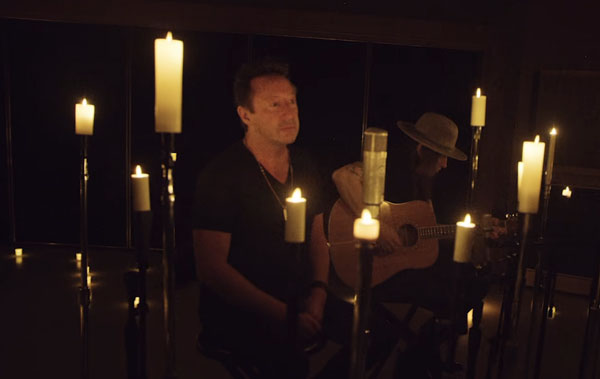 Sunday Song: Julian Lennon performs Imagine at the Global Citizen's social media rally, Stand Up For Ukraine.
Sunday Song: Julian Lennon performs Imagine at the Global Citizen's social media rally, Stand Up For Ukraine.
Lyrics Julian Lennon, Imagine.
From the 1971 album, Imagine.
Written by, John Lennon and Yoko Ono.
Imagine there's no heaven
It's easy if you try
No hell below us
Above us only sky
Imagine all the people living for today
Imagine there's no countries
It isn't hard to do
Nothing to kill or die for
And no religion too
Imagine all the people living life in peace, you
You may say I'm a dreamer
But I'm not the only one
I hope some day you'll join us
And the world will be as one
Imagine no possessions
I wonder if you can
No need for greed or hunger
A brotherhood of man
Imagine all the people sharing all the world, you
You may say I'm a dreamer
But I'm not the only one
I hope some day you'll join us
And the world will be as one
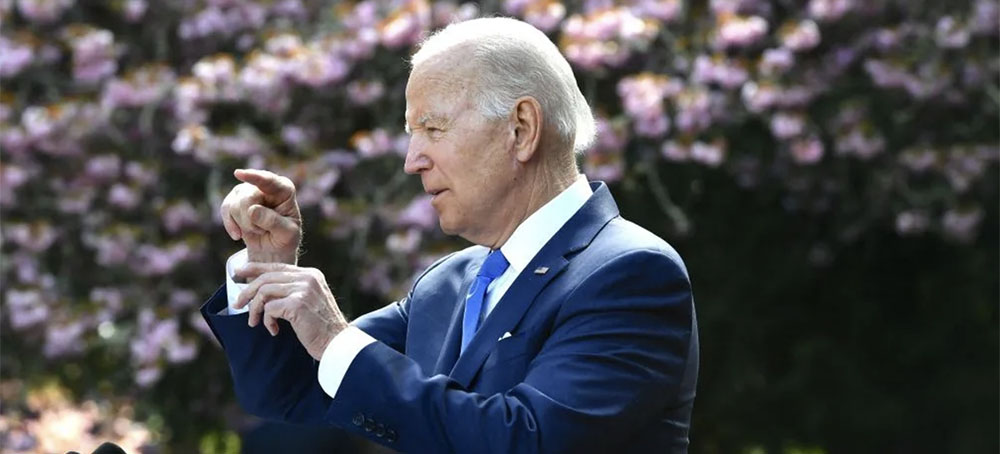 Joe Biden. (photo: Mandel Ngan/AFP)
Joe Biden. (photo: Mandel Ngan/AFP)
The order contains vague language around logging, disappointing some environmentalists calling for a ban on the practice on federal lands.
In recognition of Earth Day on Friday, President Joe Biden took a step toward protecting these trees, signing an executive order directing the Department of Interior and the Department of Agriculture to create an inventory of mature and old-growth forests on federal lands. Biden’s order requires the agencies to use the findings from the inventory to craft policies that protect old-growth forests from a number of threats, including wildfires and other risks exacerbated by climate change.
The order also recognizes the crucial role that forests play in rural economies. While sparse on details, the White House’s writeup noted that federal agencies will work with local governments, nonprofits, labor unions, and the scientific community to “create and sustain jobs in outdoor recreation and in sustainable wood, paper, and other forest products.”
Many environmental groups applauded the White House’s efforts to protect forests and recognized it as a meaningful form of climate action.
“Conserving and protecting our remaining old and mature growth trees and forests has been the missing link of U.S. climate policy for decades,” said Kirin Kennedy, a director at the Sierra Club, in a press release. “We are encouraged by President Biden’s leadership today in the hopes forests can be part of the climate solution.”
In recent decades, old-growth forests have faced a number of threats. Increasingly hot and frequent wildfires have burned old trees to a crisp. Warming temperatures are fueling the outbreak of invasive bark beetles in new territories. And timber companies have continued to fell old trees.
Biden’s executive order requires federal agencies to address the various ways in which climate change is decimating old-growth forests and calls for “climate-smart management.” But it’s unclear how the order might affect logging, particularly on federal lands. The order requires federal agencies “to advance forest-related economic opportunities” while “supporting healthy, sustainably managed forests in timber communities.”
Some environmentalists responding to the order called on the administration to ban logging. “There’s no carbon-capture technology better than older forests and trees,” said Randi Spivak, the public lands director with the Center for Biological Diversity, in a press release. “For the sake of our climate and nature, it’s time to stop logging these carbon-storing champions on federal forests now.”
Earthjustice president Abigail Dillen called on the administration to promptly release “a simple rule to safeguard federal forests nationwide from logging and other threats as a central pillar of our national climate strategy.” (Earthjustice and the Center for Biological Diversity are advertisers with Grist; advertisers have no role in Grist’s editorial decisions.)
Biden revealed the order during an Earth Day address at Seward Park in Seattle, Washington. Several hundred people gathered outside the park, including protesters with the environmental nonprofit Food and Water Watch and Build Back Fossil Free, a coalition that has been pushing Biden to declare a climate emergency and end fossil fuel development. As Biden’s motorcade passed by, activists stood with a 15-foot banner that read “C’mon man, the IPCC says it’s now or never: put an end to fossil fuels!” In a press release, Thomas Meyer, an organizer with Food and Water Watch, said that “President Biden can’t claim to be a climate leader just a week after his administration opened up more of our federal lands for fracking and drilling.”
The executive order also takes a number of steps to protect old-growth forests internationally. It notes that the State Department will produce a report on ways for the U.S. to avoid purchasing commodities such as beef, soy, and palm grown on illegally or recently deforested lands. The agency will also assess ways to deploy foreign aid and international partnerships to prevent deforestation.
Finally, the order recognizes the important role that “nature-based solutions” can play in addressing climate change. Nature-based solutions refer to a vast array of ways to restore ecosystems such that they adapt to a warming climate while better protecting humans and wildlife. Restoring marshes and swamps to absorb the effects of rising sea levels and storm surges is one example, as is prescribed burning.
The executive order requires the White House science and environmental offices to develop a report on how to better use nature-based solutions, including “everything from restoring marshes, to planting shade trees, to promoting drought-resistant crops.” The order also requires the Office of Management and Budget to develop methods for assessing the economic value of services provided by ecosystems. The order referenced the value of pollinators in agriculture and forests cleaning up air and water as examples of such services.
Special Coverage: Ukraine, A Historic Resistance
READ MORE
Follow us on facebook and twitter!
PO Box 2043 / Citrus Heights, CA 95611

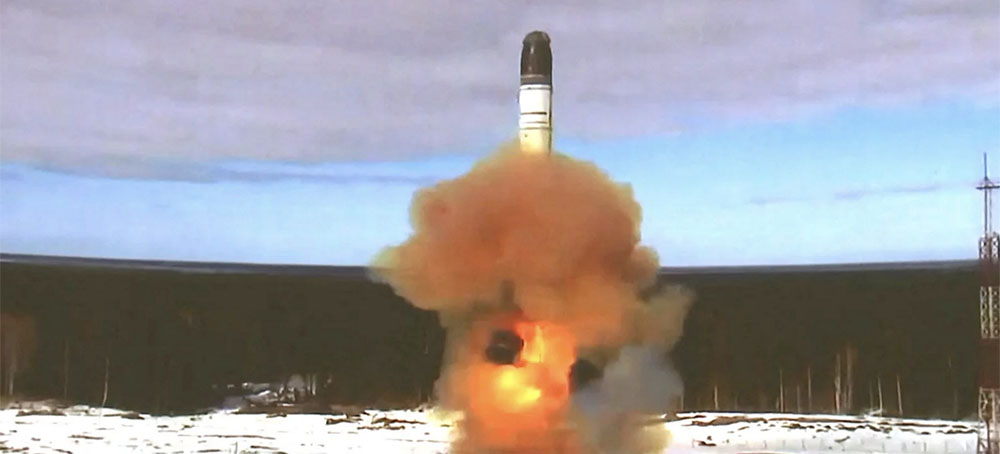

No comments:
Post a Comment
Note: Only a member of this blog may post a comment.